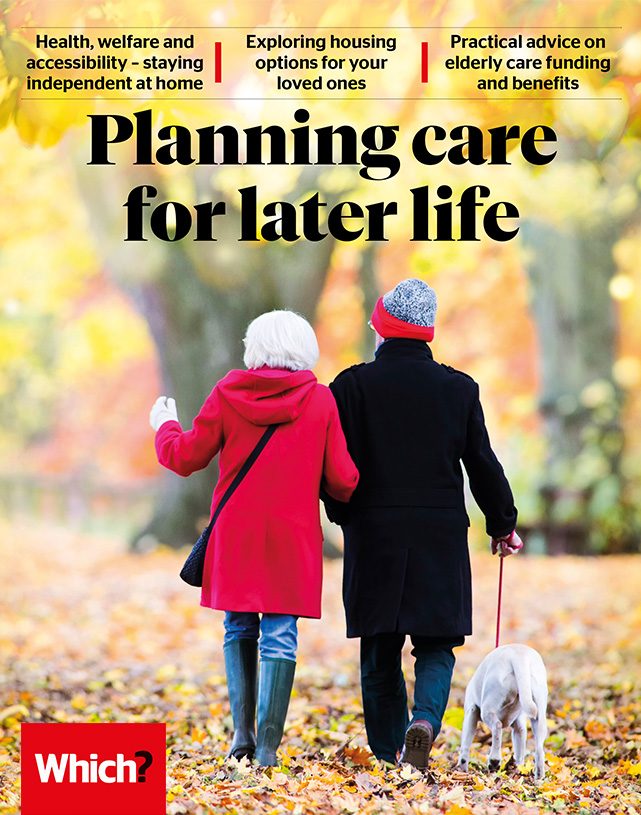User guide
Finding your way around the guide
To navigate between pages, click or tap the arrows to go forwards to the next page or backwards to the previous one. The arrows can be found either side of the page and at the bottom, too (circled in green, below).


Menu/table of contents
Click or tap on the three horizontal lines in the top-right of your screen to open the main menu/table of contents. This icon is always visible whether you're using a computer, tablet or smartphone. The menu will open on top of the page you’re on. Click on any section title to visit that section. Click the cross at any time to close the table of contents.
Text size
On a computer, you'll see three different sized letter 'A's in the top-right of your screen. On a smartphone or tablet these are visible when you open the menu (see above). If you’re having trouble reading the guide, click or tap on each of the different 'A's to change the size of the text to suit you.
Pictures
On some images you'll see a blue double-ended arrow icon. Clicking or tapping on this will expand the picture so you can see more detail. Click or tap on the blue cross to close the expanded image.
Where we think a group of images will be most useful to you, we've grouped them together in an image gallery. Simply use the blue left and right arrows to scroll through the carousel of pictures.
Links
If you see a word or phrase that's bold and dark blue, you can click or tap on it to find out more. The relevant website will open in a new tab.
Jargon
If you see a word or phrase underlined, click or tap on the word and small window will pop up with a short explanation. Close this pop-up by clicking or tapping the cross in the corner.
Help
On a computer, you'll see a question mark icon in the top-right of your screen. On a smartphone or tablet this is visible when you open the menu (see above).
Clicking or tapping on the question mark will open this user guide. It opens on top of the page you're on and you can close it any time by clicking or tapping the cross in the top-right corner.

Boost your income
Older people are entitled to a number of helpful benefits. Making full use of this extra support can boost income and open up new options for comfortable, independent living.
What are you entitled to?
There is a range of benefits available to older or disabled people, or those who need help with care. Some are means tested, while others are available to anyone who meets specific criteria. The figures listed here are the government’s benefits and pensions rates for 2019–20.
- Attendance allowance is for people aged over 65 who need help with personal care (washing, dressing or eating) due to an illness or disability. There are two weekly rates in 2019–20: £58.70 for people needing help for part of the day; or £87.65 for those in need of help day and night, or who are terminally ill. Find tips on how to apply on the Which? Later Life Care website.
- Constant attendance allowance can be claimed by people who already receive a state benefit because of illness or disability resulting from a workplace accident or service in the armed forces. Payments range from £35.80 to £143.20 a week, depending on the amount of care needed.
- Free prescriptions and eye tests are available to everyone aged 60 or over. Those on a low income or getting certain benefits may also qualify for free dental care, free glasses and free travel to hospital.
- Winter fuel payment is for people born on or before 5 November 1953. A tax-free annual payment of up to £200 if you are under 80, or £300 if you are over 80, is available to help with fuel costs. People in receipt of state pension or other relevant benefits will receive the payment automatically, while others will need to apply.
- Pension credit helps boost the state pension if you’re less well off. It is means tested and tops up income to a guaranteed amount. There are two parts to pension credit:
- Guarantee credit – if a pensioner’s total weekly income is less than £167.25 in 2019–20 (or £255.25 for a couple), you can get a top-up to this figure.
- Savings credit – an extra payment for people who have saved some money towards their retirement. It is worth up to £13.73 a week for a single person in 2019–20, but only those who reached state pension age before April 2016 are eligible and it is only paid in certain circumstances.
- State pension is available to people once they reach state pension age, regardless of savings or income. If you’ve paid in, you can take out. For anyone who retired before 6 April 2016, the full basic state pension is £129.20 per week in 2019–20 (although many will also be entitled to an additional state pension). To qualify for the full amount, you need to have made at least 30 years of National Insurance contributions. For those retiring after 6 April 2016, there is a new single-tier state pension worth £168.60 a week, but you might get more or less than that amount, depending on how many years of National Insurance contributions you have and whether you’ve ‘contracted out’ of the additional state pension in the past. As a Which? member, you can download our jargon-free guide to all aspects of the state pension system.
Use an online benefits calculator on the gov.uk website to check whether you, or your relative, are receiving all the benefits that you are entitled to.
Money-saving tips
Shop around
There are lots of ways to make your money go further in the shops. Our annual supermarket survey of more than 12,000 shoppers reveals which stores provide the best range, quality and value for money. To compare the price of a basket of goods at the major supermarkets, see our price analysis.
Some people make big yearly savings simply by changing their energy supplier. Visit our Which? Switch site to find the best deal for you.
Bargains for the over-50s
Which?'s money experts are always on the lookout for money-saving ideas. If you make a few savings, the benefits can really start to add up. Many offers are aimed specifically at older people and, surprisingly, the benefits can begin as early as 50. Check out our tips.

Travel insurance woes
Travel insurance prices can get prohibitively expensive as you get older. The insurance industry’s line on this is that older people are statistically more likely to fall ill while on holiday. Some insurers even refuse to insure people over a certain age threshold, such as 65 or 70, and pre-existing medical conditions can be another obstacle.
Our experts can help older travellers to find the right cover and avoid paying over the odds for their travel insurance.

